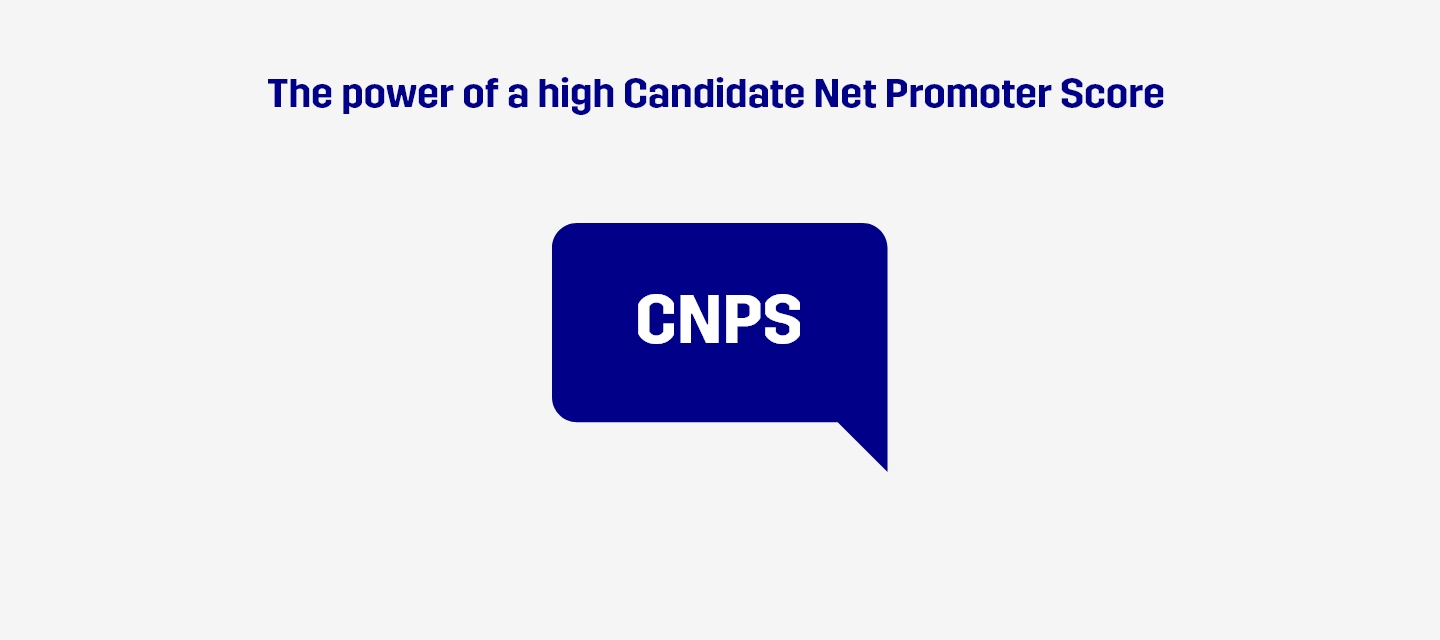
Tilda Lindén
The Power of a High Candidate Net Promoter Score
Surfing on the Wave of Positive Word of Mouth
— Denna sida är också tillgänglig på Svenska 
Measuring the candidate experience and making decisions based on what your candidates think about the recruitment process impacts your brand more than it might seem like. As the Candidate Net Promoter Score (CNPS) is the metric that the candidate experience is measured in, it has the power to both strengthen and damage a brand. The higher the CNPS, the more loyal candidates and promoters of your brand.
How Is the CNPS Related to Word of Mouth (WOM)?
Word of Mouth is a known concept within business and marketing. It can simply be described as ‘other’s opinions’ (Ameri, Honka & Xie, 2019). These opinions can concern anything from reviews of a restaurant to opinions about a controversial commercial. In this case, we are concerned about the opinions of your candidates.
By measuring the candidate experience your organization is one step closer towards strengthening its employer brand. But, in order to succeed, it is necessary to work with the recruitment process and strive towards achieving the best Candidate Net Promoter Score as possible.
Increasing the number of promoters of a brand is directly related to increasing positive Word of Mouth. The higher CNPS, the more loyal customers and the more positive WOM is created.
The impact of Word-of-Mouth
According to Ameri, Honka & Xie (2019), there is no doubt that Word of Mouth impacts consumers’ purchasing and adoption behaviors. Moreover, it also has a significant impact on the organizational attraction (Nikolaou, Bauer & Truxillo, 2015).
As WOM clearly impacts a business, this impact can be both positive and negative. As mentioned earlier a high Candidate Net Promoter Score might increase the positive WOM while a low score may do the opposite.
Nikolaou, Bauer and Truxillo (2015) state that the likeliness of generating a negative WOM is high when candidates open up about a negative candidate experience through online networks. Furthermore, this type of WOM has the power to create a negative image of the potential employer.
It might also spread so that it affects potential job seekers that have not experienced the recruitment process themselves but base their impression about the company on the negative WOM.

Even though the negative WOM is powerful, so is the positive. Research conducted by Van Hoye and Lievens (2009) found that if a potential candidate, early in the recruitment process, receives positive information about the employer through WOM it affects the perceived organizational attractiveness in a positive way. Furthermore, the attractiveness of the organization was found to be impacting the final application decision.
Understanding the potential impact of WOM clearly shows that it can either make or break your organization. Measuring the candidate experience and taking actions based on the gathered data can improve the CNPS which gives your organization the ability to “surf the wave of positive WOM”, increasing the organizational attractiveness and strengthening the brand.
Want to learn more and dig deeper into CNPS – Take a look into our free ebook Candidate Net Promoter Score – All you need to know
References
Ameri, M., Honka, E. & Xie, Y. (2019). Word of mouth, Observed Adoptions and Anime-Watching Decisions: The Role of the Personal vs. the Community Network. Marketing Science, 38(4), 567-583. https://doi.org/10.1287/mksc.2019.1155
Nikolaou, I., Bauer, T.N. & Truxillo, D.M. (2015) Applicant reactions to selection methods: An overview of recent research and suggestions for the future. Employee Recruitment, Selection, and Assessment: Contemporary Issues for Theory and Practice. 80-96.
Van Hoye, G., & Lievens, F. (2009). Tapping the grapevine: A closer look at word-of-mouth as a recruitment source. Journal of Applied Psychology. 94(2), 341-352. Retrieved from https://ink.library.smu.edu.sg/lkcsb_research/5626
Get notified on new blog updates
+ get our popular candidate experience ebook for free